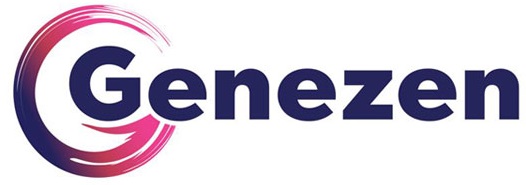Viral vectors play a vital role in the development of cell and gene therapies (C>s). By delivering genetic material to patients’ cells to replace dysfunctional or damaged DNA, these complex tools have helped to change patient outlook dramatically, particularly in the oncology space. Evidence of this can be seen in the successful use of lentiviral vectors (LVs) in chimeric antigen receptor (CAR) T cell therapies.
However, developing and manufacturing LVs is not without its own, unique challenges. In this article, Pratima Cherukuri, Chief Scientific Officer at Genezen, outlines the five most prominent hurdles LV producers will encounter when bringing their viral vector to market and offers insight into overcoming them.
Success in C> driving developers to lentiviral vectors
Lentiviruses are an ideal vehicle for the delivery of genetic material to patients’ cells ex vivo. The large (80–100 nm in diameter) enveloped virus can carry a cassette of up to 10 kb and can infect a range of cell populations – including stem cells – due to its ability to infect both dividing and non-dividing cells. Unlike another popular viral vector in the family Retroviridae, gammaretrovirus, LVs do not show a preference to integrate transgenes into gene promoter regions and are therefore associated with a lower risk of oncogenesis in cells that will proliferate.
These characteristics lend themselves well to the development of CAR therapies, including CAR-T and CAR natural killer (NK) cell therapies. In these treatments, LVs can be used to introduce genes to patients’ T or NK cells to enable the expression of CARs, which allows the cells to specifically target cancer cells, leading to their destruction.
Since the first CAR therapy was approved by the FDA in 2017, five more have successfully entered the market, targeting a range of cancer types, including lymphomas, certain leukaemia’s, and multiple myeloma1. This success has spurred the growth of the global CAR-T cell market, which is anticipated to expand from USD$1.7 billion in 2021 to USD$2.4 billion by the end of 2022 and to USD$25.0 billion by 20282. With a predicted compound annual growth rate (CAGR) of 46.6% in the 2021 to 2028 growth period, CAR-T therapies are one of the fastest-growing oncology areas2.
Recognizing the manufacturing challenges ahead
As the CAR therapy market expands, there will be a growing reliance on manufacturers of viral vectors like LVs to meet the rising demand for these unique gene delivery tools. However, being a relatively new technology, LV developers and manufacturers can expect to encounter a number of challenges that require expertise and experience to understand and overcome.
-
Stable cell lines vs transient transfection
For LV manufacturing, transient transfection is generally the preferred method for large-scale batch production for clinical trials. The methodologies for LV production will typically be based on overexpressing the transfected plasmid DNA in highly transfectable cell lines like HEK293.
However, there is a growing desire in the LV space for alternative methods of introducing the genes for LV expression due to a number of disadvantages associated with transient transfection. Transient transfection facilitates expression of viral vector genes, however, this is only short-term, as the genes introduced are not passed on to progeny cells. Additionally, the reagents and plasmids for transient transfection can be costly. When considering that these transfection methods will have to be carried out every time a new batch is needed, costs quickly add up, particularly when producing LVs for clinical trials and commercial, requiring clinical-grade reagents and plasmids.
The generation of stable cell lines (where the genes for LV component expression are integrated into the producer cell genome), is an attractive alternative to transient transfection. Offering long-term expression, decreased batch-to-batch variability, reduced cost of plasmids and reagents, and the potential for greater quality particles, stable cell line generation is ideal in theory.
However, developers must be aware that producing a stable cell line for LV expression can be arduous. This is because of potentially cytotoxic transgenes causing cell death and subsequently impacting yield. Careful modification is needed to design stable cell lines where the expression of cytotoxic genes is strictly controlled and can be induced when suitable.
-
Upstream considerations when scaling
The choice between adherent and suspension culture platforms for producer cell growth is a key challenge that LV developers and manufacturers are likely to encounter, with both offering unique benefits.
Most commonly, the cell lines used for LV production will form adherent cultures that offer the advantage of high titers. However, the need to grow on an adhesive surface means that the use of adherent cell cultures can become limiting with scale. Traditional 2D systems like CellStacks are not easily scalable to large volumes, requiring increasing numbers of vessels to produce at higher scales (“scaling out”). This can necessitate a large amount of floor space that some facilities might not be able to provide.
Alternatively, suspension culture platforms can be scaled more easily, with bioreactor volumes increasing as more product is needed. Reliance on suspension bioreactors also reduces manual handling requirements and concurrently, contamination risk.
However, not all cell lines can be easily adapted to grow in suspension, and the process of doing so can be arduous and lengthy. Instead, those working with adherent cultures that require scaling could rely on fixed-bed bioreactors, which offer a large surface area in a more compact volume to avoid the challenges of “scaling out”.
-
Shifting towards serum-free media options
Another challenge that LV developers and manufacturers can expect to encounter during upstream processing (USP) is the reliance on fetal bovine serum (FBS) in media for producer cell growth. HEK293T cells in particular are difficult to grow without this component and there are currently few serum-free media options available for adherent culture growth.
However, the FDA mandated that FBS must be treated with gamma irradiation for use in C>s. This is because FBS is bovine-derive and is consequently associated with the risk of prion transmission and spongiform encephalopathies. As a result, it has been speculated that further regulations will come into force which could make the use of serum even more challenging.
Although FBS use is expected to be eventually phased out in favor of serum-free media platforms, this could be a slow transition that LV producers must consider in their long-term plans.
-
Making tough downstream processing decisions
The aim of downstream processing (DSP) in LV production is to minimize the presences of impurities and contaminants that could impact patient safety while maximizing vector recovery. During these processes, LV developers and manufacturers must carefully consider the physico-chemical conditions and determine how these could affect the viral vectors – particularly the envelope proteins.
Tangential flow filtration (TFF) is commonly used in DSP for LV purification for ultrafiltration or diafiltration steps. This step can represent a significant challenge, as depending on the flow rate and filter membrane type, shear damage and vector loss can arise. Similar titer loss issues can be seen at sterile filtration, which is typically the final step of the DSP process for LV production.
As a result, LV developers and manufacturers must carefully consider the parameters used at TFF and consider alternative options for sterile filtration that could limit titer loss, such as sterilizing at an earlier stage and continuing in a closed system.
-
Understanding and awareness of regulations
The final key challenge that LV producers must be aware of is the need to be aware of and keep up to date with regulatory changes that might be applicable. As a relatively new therapeutic area, regulations surrounding C> development and manufacturing are still in their infancy and are prone to change, particularly as we start expanding our knowledge with R&D.
With extensive knowledge and experience working with viral vectors and potentially stemming from academic roots, contract development and manufacturing organizations (CDMOs) will be at the forefront of regulatory changes. Expert CDMOs will keep open communication with regulatory agencies, ensuring that they are in a position to anticipate and react to changes.
Key lessons
In the C> space it is becoming increasingly well established that LVs offer an abundance of advantages as a tool for delivering genes to patients’ cells. However, to capitalize on these benefits, LV developers and manufacturers must be aware of the many challenges that they could be confronted with on the journey to deliver their LV to market. From determining whether adherent or suspension culture systems will be used to staying abreast of regulatory requirements, there will be many decisions to be made and hurdles to overcome. By relying on CDMOs with years of experience in this relatively new field, LV developers can be assured that these challenges will be navigated with expertise.
References
- American Society of Gene + Cell Therapy. Gene, Cell & RNA Therapy Landscape Q1 2022 Quarterly Data Report
- https://www.pharmaceutical-technology.com/comment/car-t-cell-therapies/




















